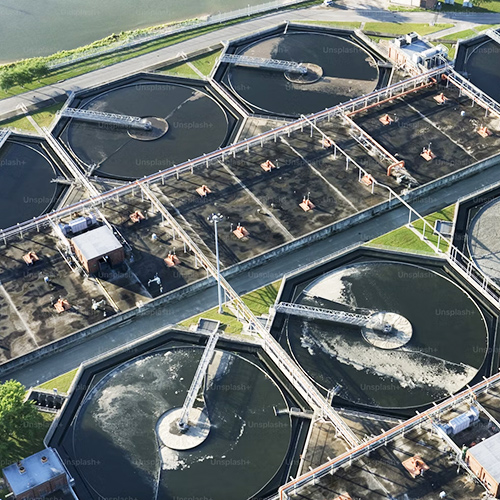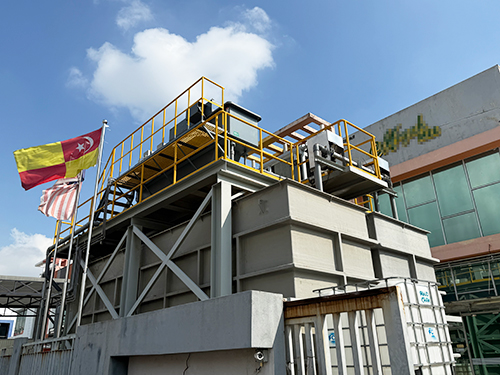Views: 888 Author: Yosun Publish Time: 2025-10-28 Origin: Site









Industrial wastewater is one of the most complex forms of pollution facing the modern world. It contains a wide variety of contaminants such as oils, grease, suspended solids, and chemical residues that originate from manufacturing, food processing, petrochemical, and metal industries. The effective treatment of this wastewater is critical for environmental protection, public health, and compliance with increasingly strict discharge standards.
One of the most efficient technologies developed for this purpose is the DAF dissolved air flotation system, which separates suspended solids and oils through microbubble flotation. This method not only improves water quality but also allows industries to recycle and reuse treated water, reducing operational costs and environmental impact.
Industrial wastewater is produced during various production and cleaning processes. Its composition varies depending on the source:
Food and beverage wastewater contains organic matter, fats, and starches.
Petrochemical effluents include oils, hydrocarbons, and emulsified substances.
Metal finishing wastewater often contains heavy metals and fine particles.
Textile and dyeing wastewater may carry dyes, fibers, and chemical additives.
Due to this variation, treatment systems must be adaptable, efficient, and capable of handling both organic and inorganic contaminants. The DAF dissolved air flotation system is widely used for this purpose because of its flexibility and high separation performance.
The DAF dissolved air flotation system operates based on the principle of introducing pressurized air into wastewater. When the pressure is released, air forms microbubbles that attach to suspended particles and oils. These bubbles decrease the overall density of the particles, causing them to float to the surface. The floating layer is then removed using a mechanical skimming device, while clarified water exits from the bottom of the tank.
Air Saturation Unit – Dissolves air into water under pressure.
Flotation Tank – Where separation occurs between floated sludge and clarified water.
Chemical Dosing System – Enhances particle aggregation for improved flotation.
Skimming Device – Continuously removes the floated sludge layer.
Control Panel – Automates operation and ensures stable process performance.
This combination allows the DAF system to achieve high removal efficiency for suspended solids (SS), fats, oils, and grease (FOG), and reduce biochemical oxygen demand (BOD).

The DAF dissolved air flotation system provides several significant benefits over traditional sedimentation and filtration methods:
High efficiency: Removes up to 90% of suspended solids and oils.
Compact footprint: Ideal for facilities with limited space.
Rapid separation: Microbubbles enable fast flotation and sludge collection.
Low maintenance: Few moving parts and stable automated operation.
Improved effluent quality: Produces clarified water suitable for reuse or discharge.
These characteristics make DAF systems an essential part of modern industrial wastewater treatment plants.
The versatility of the DAF system allows it to be integrated into various industrial processes:
DAF units remove fats, proteins, and organic solids, preventing downstream clogging and maintaining effluent quality.
They separate oil and grease efficiently, ensuring that the effluent meets environmental regulations.
DAF systems help remove dyes, fibers, and fine suspended solids formed after coagulation and flocculation.
DAF units assist in removing fine metal particles and heavy metals, improving water clarity and enabling partial water reuse.
In municipal applications, DAF serves as a primary or secondary clarifier to stabilize treatment efficiency and support sludge dewatering processes.
DAF systems are often used in combination with other technologies to achieve comprehensive treatment:
Before biological treatment: DAF reduces organic load and prevents shock to biological systems.
After chemical coagulation: Enhances separation of flocculated particles.
As tertiary polishing: Produces clear, reusable effluent for non-potable applications.
By working synergistically with coagulation, filtration, and sedimentation, DAF systems improve the overall reliability of the industrial wastewater treatment process.
To ensure optimal performance of a DAF dissolved air flotation system, several design factors must be considered:
Flow rate: Determines tank volume and air-to-solids ratio.
Influent composition: Guides chemical dosing and retention time.
Bubble size control: Microbubbles (20–100 microns) maximize flotation efficiency.
Sludge handling: Proper skimming and sludge removal prevent recontamination.
Material selection: Stainless steel and corrosion-resistant coatings extend service life.
At Yosun, our DAF systems are custom-engineered to match client-specific wastewater profiles. Each unit is designed to handle variable influent conditions, maintain high removal rates, and minimize maintenance requirements.
The DAF dissolved air flotation system contributes not only to regulatory compliance but also to sustainable operation:
Reduced environmental hazards: Prevents contamination of soil and water bodies.
Water conservation: Enables reuse of treated water for washing, cooling, or irrigation.
Lower sludge volume: Produces concentrated sludge, reducing disposal costs.
Energy efficiency: Modern DAF systems use optimized air injection to cut energy use.
Resource recovery: Recovered oils and solids can often be reused or recycled.
These benefits align with global sustainability goals and corporate environmental responsibility initiatives.
The demand for cleaner production and stricter environmental regulations is driving innovation in wastewater treatment. DAF dissolved air flotation systems are evolving toward automation, modular design, and integration with smart monitoring technologies. Future systems will include:
Real-time sensors for air saturation and sludge thickness monitoring
AI-assisted control for automatic chemical dosing
Modular units for flexible plant expansion
Energy-efficient microbubble generation systems
As industries continue to move toward zero-liquid discharge and water reuse strategies, DAF systems will remain a core component in achieving these sustainability targets.
